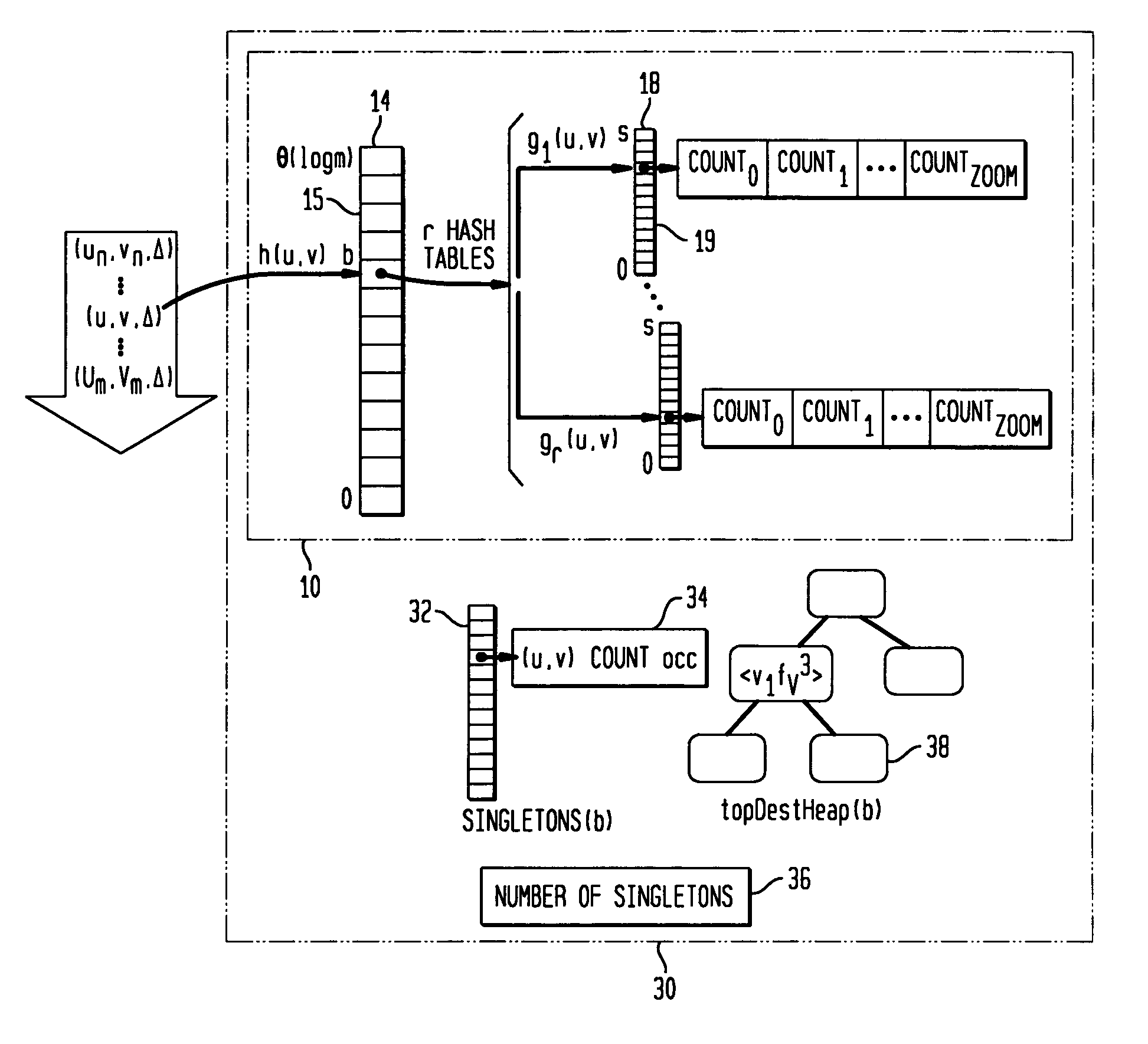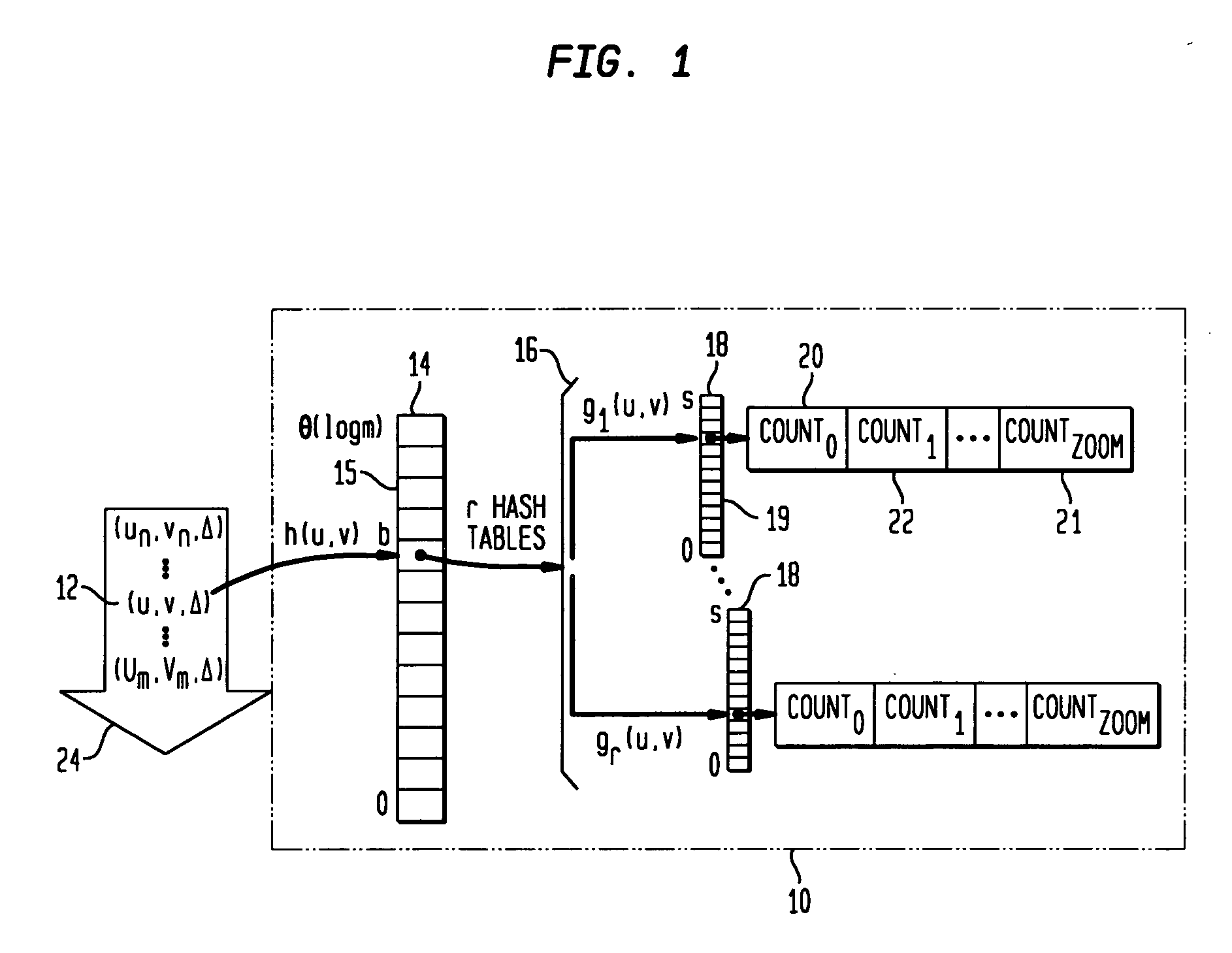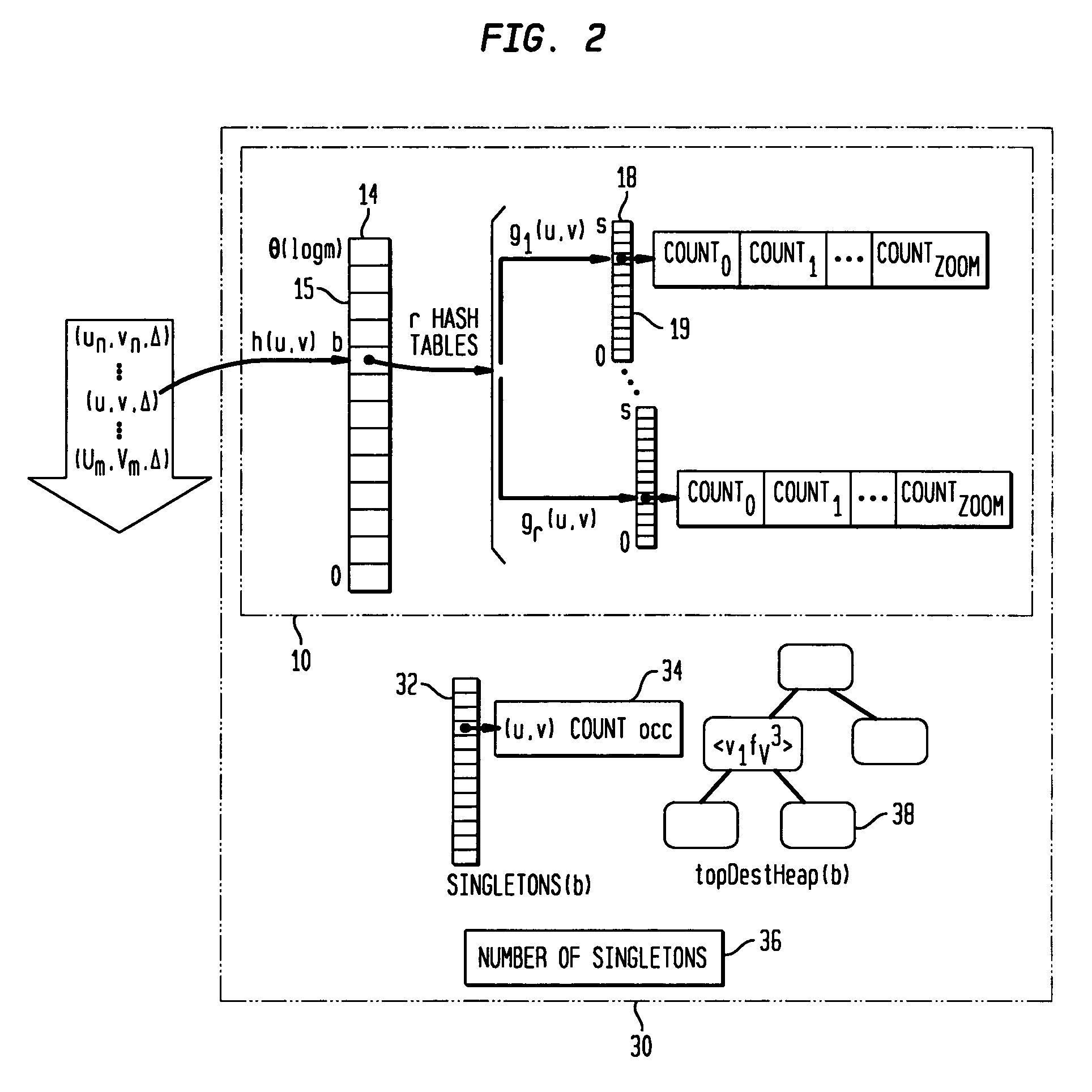Streaming algorithms for robust, real-time detection of DDoS attacks
- Summary
- Abstract
- Description
- Claims
- Application Information
AI Technical Summary
Benefits of technology
Problems solved by technology
Method used
Image
Examples
Embodiment Construction
[0028] The present invention concerns methods and systems for estimating distinct-counts, i.e., counting the number of distinct domain values in a data set, and particularly for estimating distinct counts in a data-streaming fashion, i.e., by looking at each data-element only once, in a fixed order of arrival, in data streams having both insertion and deletion events.
[0029] A distinct-count provides the number of members of a set of data. Distinct-count queries, sometimes referred to as questions that can be expressed in set or frequency-independent semantics, are of importance in many fields including data-network management, business intelligence, data warehousing and data mining. The classic distinct-count query in retailing is “how many customers are buying a particular product?” To obtain this number, the total sales of the product have to be analyzed to eliminate duplication, i.e., to ensure that any customer who bought the product more than once is only counted as one distin...
PUM
 Login to View More
Login to View More Abstract
Description
Claims
Application Information
 Login to View More
Login to View More - R&D
- Intellectual Property
- Life Sciences
- Materials
- Tech Scout
- Unparalleled Data Quality
- Higher Quality Content
- 60% Fewer Hallucinations
Browse by: Latest US Patents, China's latest patents, Technical Efficacy Thesaurus, Application Domain, Technology Topic, Popular Technical Reports.
© 2025 PatSnap. All rights reserved.Legal|Privacy policy|Modern Slavery Act Transparency Statement|Sitemap|About US| Contact US: help@patsnap.com



